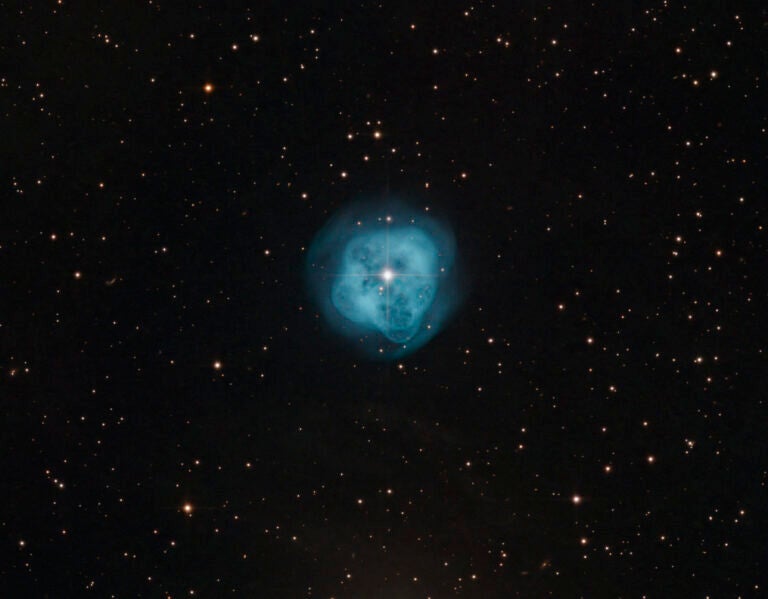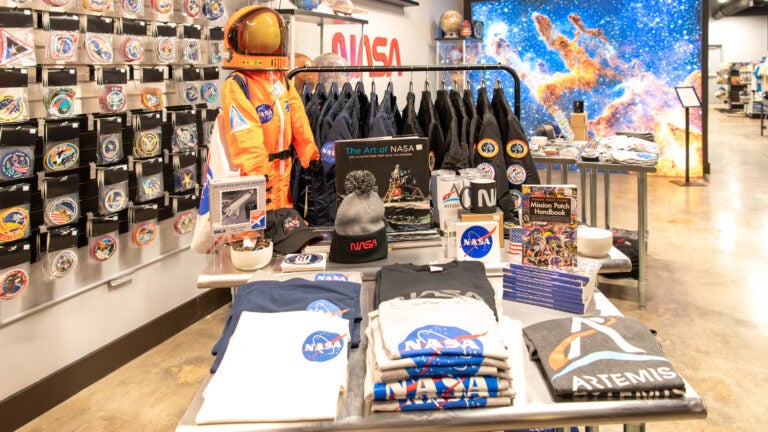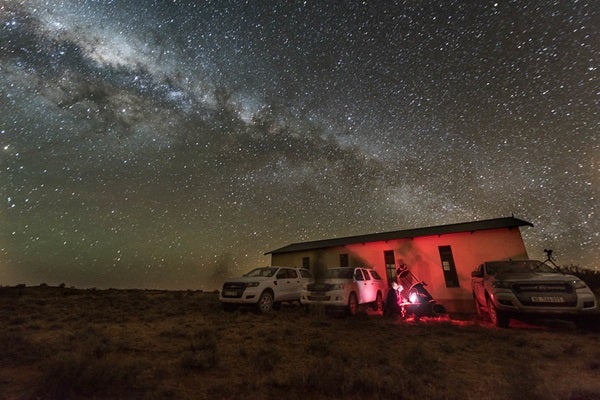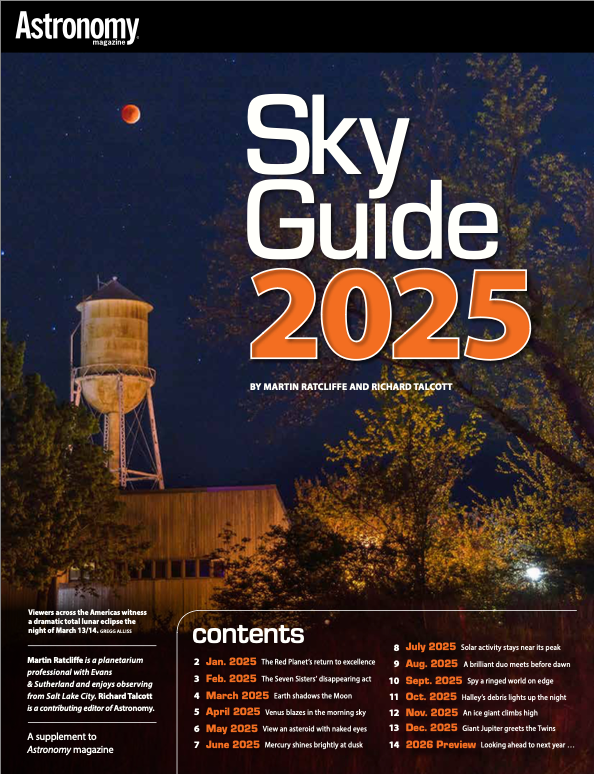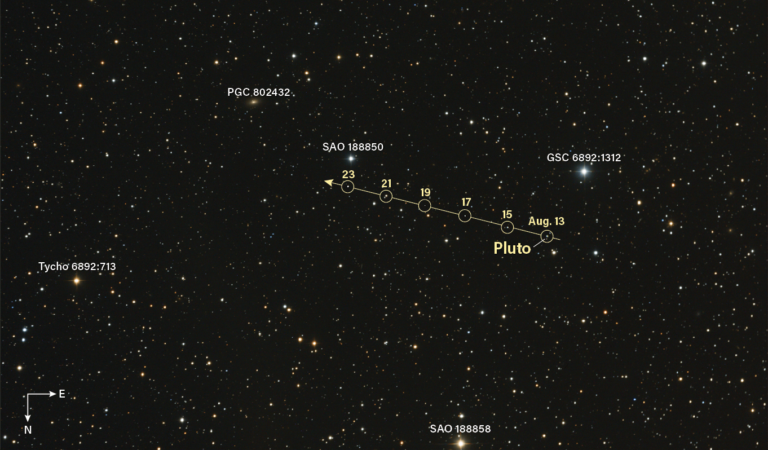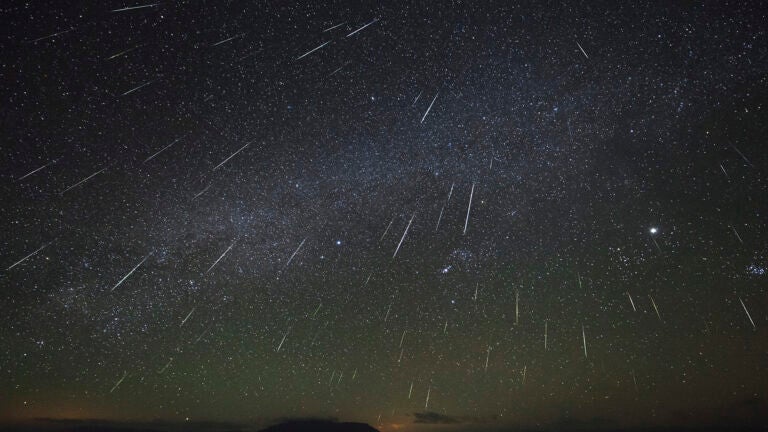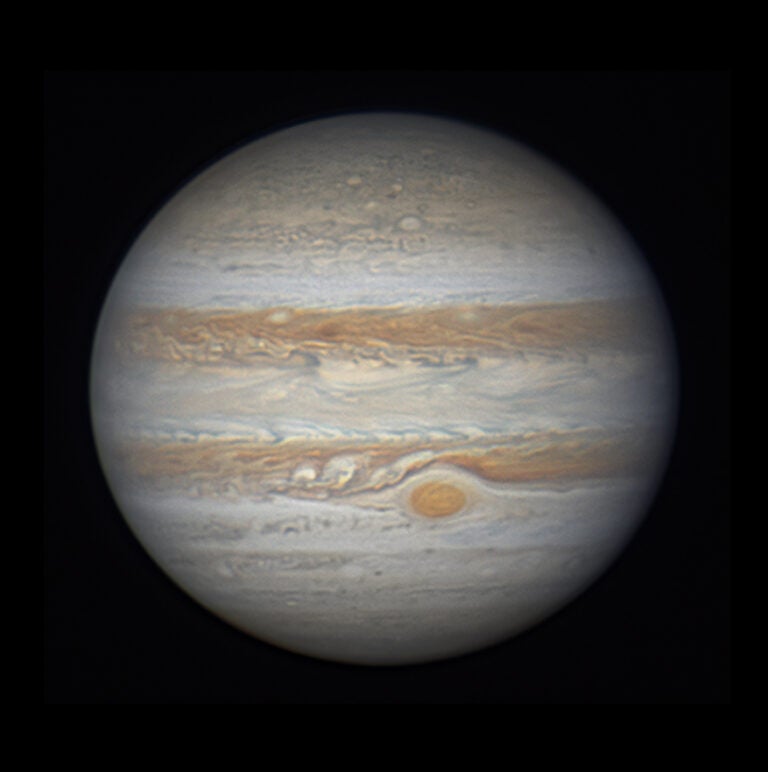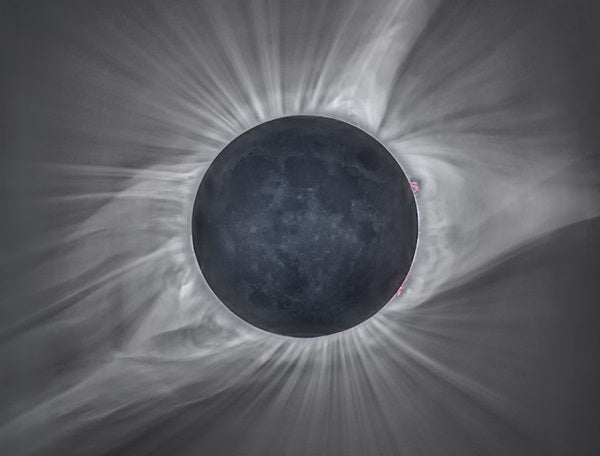
Here are 25 fascinating facts about the 2024 total solar eclipse, which will race up through Mexico, trek through the United States from Texas to Maine, and finish out its land journey by dashing through the eastern tip of Canada.
1. This will be the first total solar eclipse in the continental U.S. in 7 years.
The last one occurred August 21, 2017. It crossed the country from Oregon to South Carolina, and millions of people viewed it successfully. Before that one, you have to go back to February 26, 1979. And it will be 20 years until the next one: August 23, 2044.
2. A solar eclipse occurs when the Sun, the Moon, and Earth are aligned, or in syzygy.
The Moon, directly between the Sun and Earth, casts a shadow on our planet. If you’re in the dark part of that shadow (the umbra), you’ll see a total eclipse. If you’re in the light part (the penumbra), you’ll see a partial eclipse.
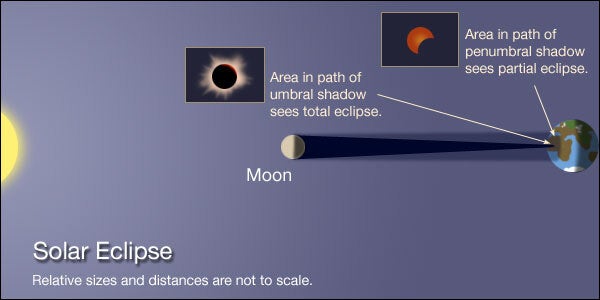
3. A solar eclipse only happens at New Moon.
The Moon has to be between the Sun and Earth for a solar eclipse to occur. The only lunar phase when that happens is New Moon.
4. Solar eclipses don’t occur at every New Moon.
The reason is that the Moon’s orbit is tilted 5° compared to Earth’s orbit around the Sun. Astronomers call the two intersections of these paths nodes. Eclipses only occur when the Sun lies at one node and the Moon is either at the same node (for solar eclipses) or at the opposite node (for lunar eclipses). During most (lunar) months, the Sun lies either above or below one of the nodes, and no eclipse occurs.
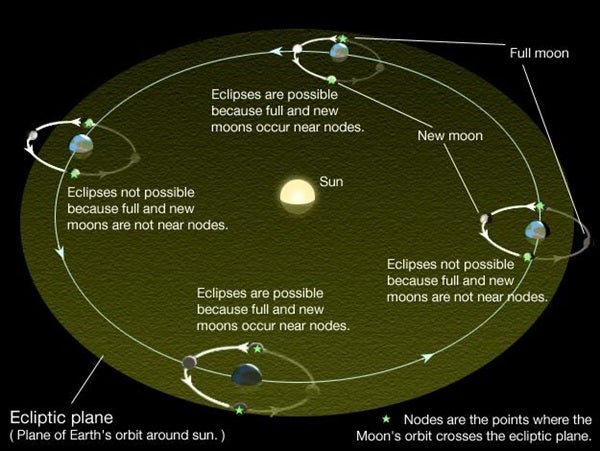
5. Eclipse totalities are different lengths.
The reason the total phases of solar eclipses vary in time is because Earth is not always at the same distance from the Sun, and the Moon is not always the same distance from Earth. The Earth-Sun distance varies by 3 percent and the Moon-Earth distance by 12 percent. The result is that the Moon’s apparent diameter can range from 10 percent smaller to 7 percent larger than the Sun’s.
RELATED: Detailed maps of totality | Solar eclipse FAQs | How to take photos of the eclipse
6. It’s all about magnitude and obscuration.
Astronomers categorize each solar eclipse in terms of its magnitude and obscuration — and I don’t want you to be confused when you encounter these terms. The magnitude of a solar eclipse is the percent of the Sun’s diameter that the Moon covers during maximum eclipse. The obscuration is the percent of the Sun’s total surface area covered at maximum. Here’s an example: If the Moon covers half the Sun’s diameter (in this case the magnitude equals 50 percent), the amount of obscuration (the area of the Sun’s disk the Moon blots out) will be only 39.1 percent.
7. Solar eclipses occur between Saros cycles.
Similar solar and lunar eclipses recur every 6,585.3 days (18 years, 11 days, 8 hours). Scientists call this length of time a Saros cycle. Two eclipses separated by one Saros cycle are similar. They occur at the same node, the Moon’s distance from Earth is nearly the same, and they happen at the same time of year.
8. Everyone in the continental U.S. will see at least a partial eclipse.
In fact, if you have clear skies on eclipse day, the Moon will cover at least 16 percent of the Sun’s surface, and that’s from Neah Bay at the northwestern tip of Washington.
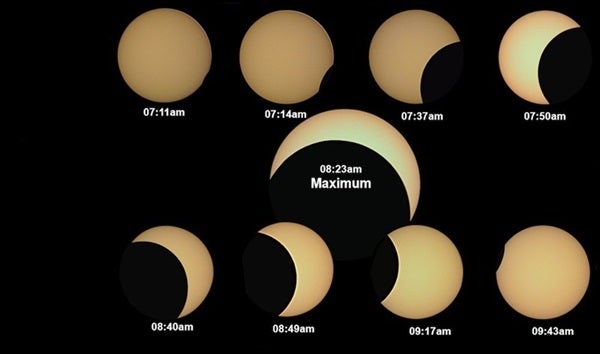
9. It’s all about totality.
Not to cast a shadow on things, but likening a partial eclipse to a total eclipse is like comparing near-death to death. I know that 16 percent sounds like worthy coverage. It isn’t. You won’t even notice your surroundings getting dark. And it doesn’t matter whether the partial eclipse above your location is 16, 56, or 96 percent. Only totality reveals the true celestial spectacle: the diamond ring, the Sun’s glorious corona, strange colors in our sky, and seeing stars in the daytime. (And don’t forget to listen to your surroundings, too; wildlife tends to react to a total solar eclipse suddenly passing overhead.)
10. You want to be on the center line.
This probably isn’t a revelation, but the Moon’s shadow is round. If it were square, it wouldn’t matter where you viewed totality, as people across its width would experience the same duration of darkness. But because the lunar shadow is round, the longest duration of an eclipse occurs at its center line, as that’s where you’ll experience the full width of the Moon’s shadow.
11. First contact is in Texas.
If you want to be the first person to experience totality in the continental U.S., be at the Mexican border in Las Quintas Fronterizas, Texas, at 1:27:21 p.m. CDT. There, the total phase lasts 4 minutes 22 seconds.
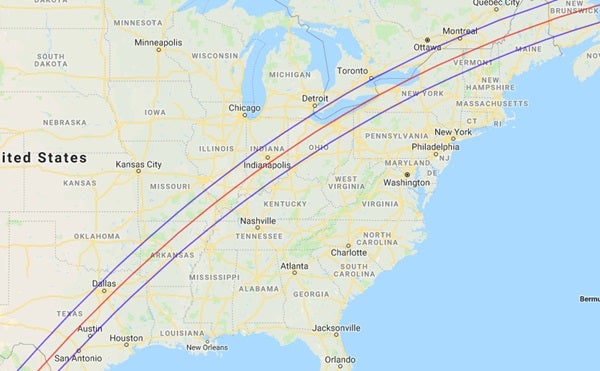
12. The center line crosses through 15 states.
After a great southwest-to-northeast run through Texas, totality simultaneously begins in Oklahoma and Arkansas at 1:45:39 p.m. CDT. Next up is Missouri. Unfortunately, Saint Louis lies just outside the path’s northern limit. Technically, Tennessee can claim to be one of the states touched by totality, however only a tiny part of its northwest corner is covered by the umbra. Likewise, only a small part of far-western Kentucky experiences totality. A large section of southern Illinois lies along the path, but it pales in comparison with the swath the umbra covers in the next two states: Indiana and Ohio. Even before the eclipse passes out of Ohio, a tiny tip of southeastern Michigan technically sees totality. The last stages in the U.S. see the path cover areas of Pennsylvania, New York, Vermont, New Hampshire, and Maine.
13. Totality lasts a maximum of 4 minutes 28 seconds.
That’s it. To experience that length, you’ll need to be in the small town of Nazas, Mexico, which is about 40 miles (60 km) southwest of Torreón. And trust me, no matter how long totality really lasts, solar eclipses are so captivating, they always seem to only last a few brief seconds.
14. The end of the eclipse for the U.S. is in Maine
Totality leaves the United States for good in 2024 at 3:35 p.m. EDT on the eastern edge of Littleton, Maine. An observer there would enjoy 3 minutes 22 seconds of totality with the Sun 35° high in the west-southwest at mid-eclipse.
15. Cool things are afoot before and after totality.
Although the big payoff is the exact lineup of the Sun, the Moon, and your location, also pay attention during the partial phases that lead up to and follow totality. As you view the early stages through a safe solar filter, the universe will set your mind at ease when you see the Moon take its first bite out of the Sun’s disk. Around the three-quarters mark, you’ll start to notice that the shadows around you are getting sharper. The reason is that the Sun’s disk is shrinking, literally approaching a point — and a smaller light source produces better-defined shadows. At about 85 percent coverage, you’ll be able to spot Venus 15° west-southwest of the Sun. If any trees are at your site, you may see their leaves act like simple pinhole cameras, with hundreds of crescent Suns appearing in their shadows.
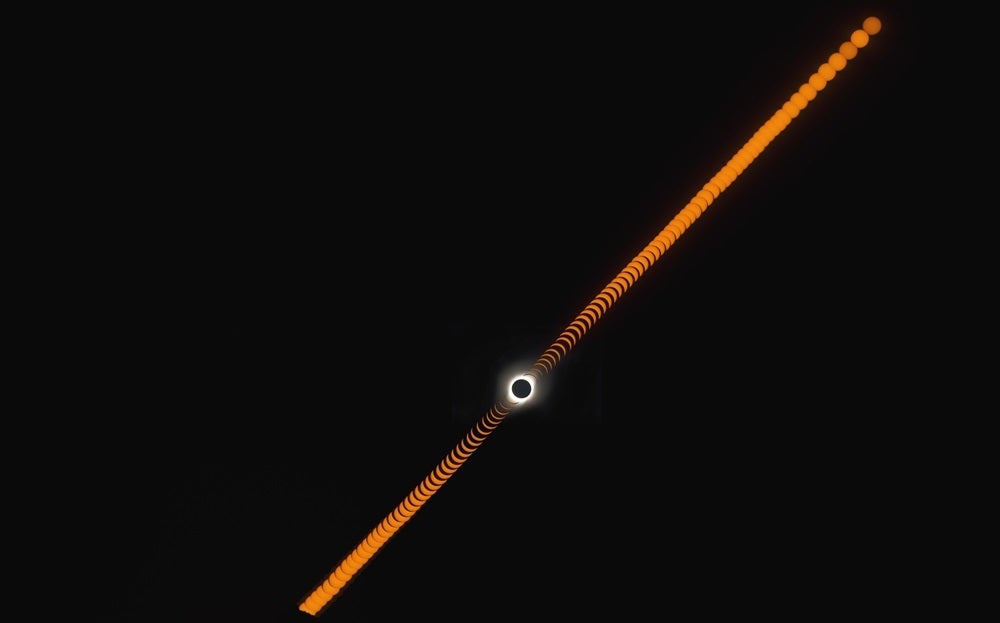
16. This eclipse will be the most-viewed ever.
I base this proclamation on four factors: First, the attention it will get from the media; second, the superb coverage of the highway system in our country; third, the typical weather on that date (April 8, 2024); and fourth, the vast number of people who will have access to it from large cities located near the eclipse path.
17. Several large cities will enjoy a great view.
Unlike the 2017 eclipse, which covered only one large city, Nashville, the 2024 event will plunge several major metropolitan centers into darkness. Many completely lie along the path, while others will have a large percentage of their areas covered. Among them are Mazatlán, Mexico; San Antonio, Austin, Fort Worth, and Dallas, Texas; Indianapolis, Indiana; Cincinnati, Columbus, and Cleveland, Ohio; and Buffalo, New York.
18. Tens of millions of people live in the eclipse path.
In 2017, approximately 12.25 million residents of the U.S. lived along the path of totality. In 2024, more than that number live along the path before the eclipse even exits Texas. In all, approximately 31.5 million people can simply walk outside, look up, and see a totally eclipsed Sun in the daytime sky during the 2024 eclipse — weather permitting, of course.
19. Totality is safe to look at.
During the time the Moon’s disk covers that of the Sun — and only then — it’s safe to look at the eclipse without a solar filter or eclipse glasses. In fact, to experience the awesomeness of the event, you must look at the Sun without a filter during totality.
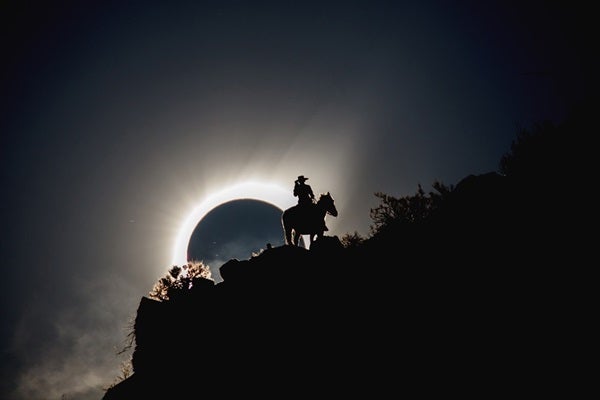
20. Yes, the Sun’s a lot bigger.
But it’s also a lot farther away. The Sun’s diameter is approximately 400 times larger than that of the Moon. What a coincidence that it also lies roughly 400 times farther away. This means both the solar and lunar disks appear to be the same size. But that won’t last forever. The Moon is slowly inching away from Earth, meaning that hundreds of millions of years from now, the Moon will appear too small to entirely cover the Sun’s disk. At that point, solar eclipse will be a thing of the past.
21. You won’t need a telescope.
One of the great things about the total phase of a solar eclipse is that it looks amazing to naked eyes. The sight of the corona surrounding the Moon’s black disk in a darkened sky is unforgettable. That said, binoculars at relatively low power still give you a close-up view — one that you should take advantage of several times during the event.
22. Nature will take heed.
Depending on your surroundings, as totality nears you may experience strange things. Look: You’ll notice a resemblance to the onset of night, though not exactly. Areas much lighter than the sky near the Sun lie all around the horizon. Shadows appear different. Listen: Usually, any breeze will dissipate and birds (many of whom will return to roost) will stop chirping. It is quiet. Feel: A 10°F to 15°F drop in temperature is not unusual. After all, the Sun provides a lot of energy to the surface of our planet.
23. Maximum totality is not the longest possible in 2024.
The longest possible duration of the total phase of a solar eclipse is 7 minutes 32 seconds. Unfortunately, the next solar eclipse with a totality approaching 7 minutes won’t occur until June 13, 2132. That eclipse, with a maximum duration of 6 minutes 55 seconds, will be the longest since the 7 minutes 4 seconds of totality experienced June 30, 1973.
24. The future is bright, but long.
The next total solar eclipse over the continental U.S. requires a 20-year wait until August 23, 2044. That one is visible only in Montana and North Dakota. Great total solar eclipses follow in 2045 and 2078. Those events have maximum totalities of 6 minutes 6 seconds and 5 minutes 40 seconds, respectively.
25. This eclipse will happen on April 8, 2024!
Astronomers, whether professional or amateur, are familiar with the uncertainty and limited visibility of some celestial events. Comets may appear bright if their compositions are just so. Meteor showers might reach storm levels if we pass through a thick part of the stream. A supernova as bright as a whole galaxy is visible now, but you need a telescope that can spot it. In contrast, the 2024 total solar eclipse will occur when we say, where we say, for how long we say — and in the daytime, no less. Guaranteed!



